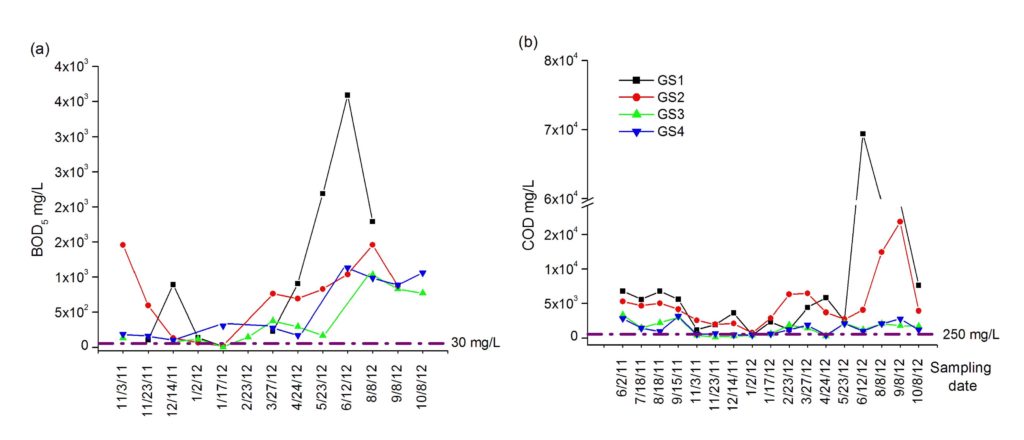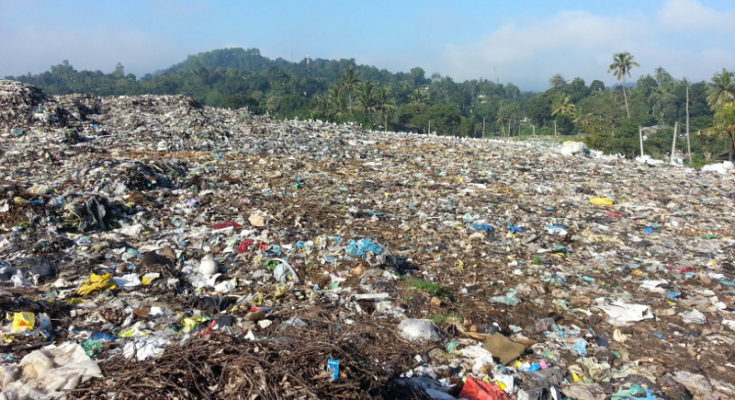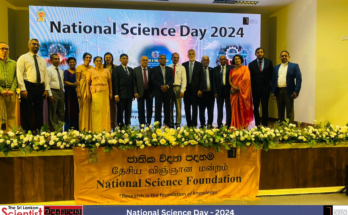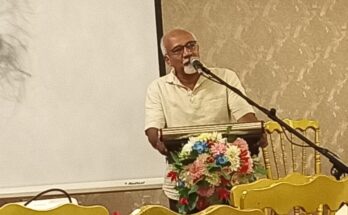By Dr. Meththika Vithanage
Uncontrolled population growth, rapid urbanization, the rise in community living standards and poor planning have greatly accelerated the municipal solid waste generation rate in Sri Lanka where the wealth is finally ended up in open dump sites as waste creating warning signs to water sources. The quality of drinking water as we know, is a significant determinant of health and hence, the deterioration of the water quality cause significant social costs and economic inefficiencies. This is exemplified by the very large pollutant levels reaching water bodies from the municipal solid waste (MSW) dump sites.
Municipal solid waste (MSW) management with environmentally accepted nature is one of the biggest challenges of 21st century that we face in many countries. Open dumping of waste is the most common method used to dispose municipal solid residues in most of the developing countries. In Sri Lanka, the predominant practice of waste disposal is by means of open dumping similar to most South Asian countries. Open dumping of waste with higher organic content further aggravates problems due to formation of large amount of highly polluted leachate. Landfill leachate is one of the major sources for the presence of high concentrations of toxic metals as well as organic carbon compounds and nitrogenous compounds . The characterization of the landfill leachate plays an important role when determining the treatment method. Landfill leachate in the humid tropics may show a clear difference from that of the temperate and arid regions . In addition, most of the leachate characterization studies were found for developed countries and there are many limitations for adapting them into the developing countries. Unfortunately, only a few studies were carried out to evaluate the pollution level of landfill leachates in Sri Lankan dumpsites, although most of the leachate directly flows to nearby water sources leading significant pollution to the environment .
Wealth to Waste: Waste Load and Composition
Sri Lanka is an island located in the Indian Ocean with a total area of 65,525 km2 and a population of 20.2 million people. At present, average solid waste generation in Sri Lanka is 6,500 tonnes per day and recent studies showed that the rate of wealth to waste or the waste generation rate in most urban population in Sri Lanka is close to 1 kg/capita/day. It has been found that more than 60% of the MSW in Sri Lanka is organic matter, whereas paper, wood, plastic, metal and glass encounter for the rest 12, 10, 7, 4 and 3% respectively.
Waste to Water: Landfill Leachate
The matrix of contaminants liquid that drains by landfill is termed leachate and mainly leachate forms as rainfall percolates through the surface of and into the refuse material of a landfill. Hence, direct relationship can be identified between precipitation or seasonal variation with leachate generation. In addition, the moisture content of waste is also significantly influenced to generate quantity of leachate. Landfill leachates from the MSW are variable and complex material, reflecting the composition of solids deposited in the landfill. Landfill leachates from the MSW are variable and complex material, reflecting the composition of solids deposited in the landfill. It is a common source of many contaminants, and MSW leachates often have high concentrations of heavy metals (such as Pb, Cd, Ni, Cr, Zn, Mn, Cu, Fe), dissolved organic carbon components (such as humic, fulvic and hydrophilic acids), inorganic ions (such as NO3–, NH4+, NO2–, PO43-, SO43-, Cl–) and xenobiotic organic compounds (such as halogenated hydrocarbons, aromatic hydrocarbons, phenols, benzene, chlorinated aliphatics). However, leachate characteristics can differ between temperate and tropical countries because of climatic differences and chemical variation stemming from dissimilar consumer patterns.
The Gohagoda Open Dumpsite
The Gohagoda open dump site in Kandy, is receiving MSW from the world heritage city, Kandy since 1960’s (Fig 1). Presently, ~130 tones/day of MSW including waste from slaughter houses, fish market, households and hospital waste are being directly dumped without any sorting or pretreatment. The leachate emission rate at the Gohagoda is estimated as 30,304 m3/year. The existing drainage channel streaming from the dump site and adjoining lands directly flows to the River Mahaweli, the largest and longest river in Sri Lanka, without being exposed to any treatment process which could lead to adverse environmental and health impacts since the water supply intake for the nearby urban area.

End point of Leachate: Drinking water Pollution
During this study landfill leachate data were collected from June 2011 to October 2012 from four sampling points of the leachate drainage channel. At the same time, landfill leachates from Gohagoda was analyzed for Dissolved Organic Carbon (DOC) and Volatile Organic Compounds (VOCs). GS1 and GS4 were located at starting and end point of the channel whereas GS2 and GS3 points were at the middle (Fig 1). The analytical results for many of the parameters like BOD5, COD, pH, alkalinity, ammonium nitrogen etc demonstrate a remarkable similarity with leachate (i.e. methanogenic leachate) generated from old landfills in the world (Table 1).The BOD5and COD values respectively exceed almost 50 times and 10 times the permissible levels for wastewater (Fig 2).

waste in to inland surface waters by the Central Environmental Authority (CEA), Sri Lanka. The demonstrated values for ammonium-N, phosphate, solids and some heavy metals concentrations including Ni, Cr, Pb were much higher exceeding country’s permissible levels for waste water discharge. Even though, some parameters bellow to the recommended values, there is an extensive pollution occurring since the cumulative load discharge to the river annually. The observed maximum TOC and DOC values were 56,955 and 28,493 mg/L, respectively, which indicated high degree of organic discharge to the river Mahaweli [3]. At the same time, benzene and toluene were most commonly observed, ranging from 1.78–21.7 and 1.73–20.2 mg/L, respectively. 4-Isopropyltoluene had the highest concentrations of the VOCs investigated (129 mg/L). Totally, 9 different VOCs out of 13 listed were detected in the landfill leachate from Gohagoda.
Table 1: Comparison of the experimental results for landfill leachates in Gohagoda open dump site (GS 1 and GS4 locations) with methanogenic and acetogenic leachate characteristics in Robinson 2007 (Results in mg/L unless pH, conductivity mS/cm, * denotes for annual average value)
| Constituents | Gohagoda leachates * | Acetogenic leachates | Methanogenic leachates | CEA standards | |
| GS1 | GS4 | ||||
| pH | 8.12 | 8.16 | 5.5 – 7 | 7.5 – 8.5 | 6 – 8.5 |
| BOD5 | 1090 | 528 | 4000 – 30000 | <500 – 1000 | 30 |
| COD | 13248 | 1425 | 10000 – 50000 | 2000 – 6000 | 250 |
| TSS | 1730 | 126 | 50 | ||
| Alkalinity | 8890 | 2589 | 2000 – 10000 | 10000 – 30000 | |
| Ammonia-nitrogen | 1113 | 330 | 750 – 2000 | 1500 – 3000 | 50 |
| Nitrate-nitrogen | 128 | 32 | <1 | <1 | |
| Phosphate | 107 | 54 | 5 – 20 | 1000 – 3000 | 5 |
| Chromium | 0.13 | 0.09 | <0.1 – 0.1 | <0.3 – 2 | 0.1 |
| Lead | 0.18 | 0.14 | <0.1 – <0.5 | <0.05 – 0.2 | 0.1 |
| Zinc | 1.15 | 0.3 | 5-20 | <0.01 – 0.05 | 5 |
| Nickel | 0.33 | 0.11 | <0.1 – <1 | <0.05 – 0.1 | 0.1 |
| Cadmium | 0.40 | 0.01 | <0.1 – <0.2 | <0.02 – 0.01 | 0.1 |
Risks on the Public
Landfill leachate discharges to the river Mahaweli, is rich in dissolved organic compounds, can complex toxic heavy metals, allow those to flow and transport easily to water supply schemes. Chlorination is commonly used in the water treatment process in Sri Lanka. The DOC and VOCs from landfill leachate may contribute the formation of various disinfection by-products (DBP) such as trihalomethane (THMs) and haloacetic acids (HAAs) during the disinfection process with chlorine. These carcinogenic compounds may impose a threat to the health of the general public. Although the total concentrations of pollutants exhibited a reduction with the distance from the dumpsite, their adverse effects are not negligible due to the enormous quantity of leachate flows downstream. At the same time, the dispersion of VOCs into the air may influence the quality of life in nearby residents. The context may become severe due to the non-existence of landfill cover or liner so that not only the surface water but also groundwater, soil and atmosphere may pollute to an extremely dangerous level beyond redemption.
An Urgent Need
The physico-chemical composition of landfill leachate along with its temporal and spatial changes well illustrates the extent of pollution of the receiving water bodies and risks associated with the water use. It is an urgent need to implement leachate treatment facility to reduce the risk and the vulnerability of public health.
The research was funded by the National Research Council Sri Lanka, NRC Grant 15-024. The equipment for the study was supported by the JST-JICA SATREPS Project.
About the Author
Dr. Meththika Vithanage
Senior Lecturer,
Faculty of Applied Sciences
University of Sri Jayawardhanapura




One Comment on “WWW: Wealth, Waste to Water”